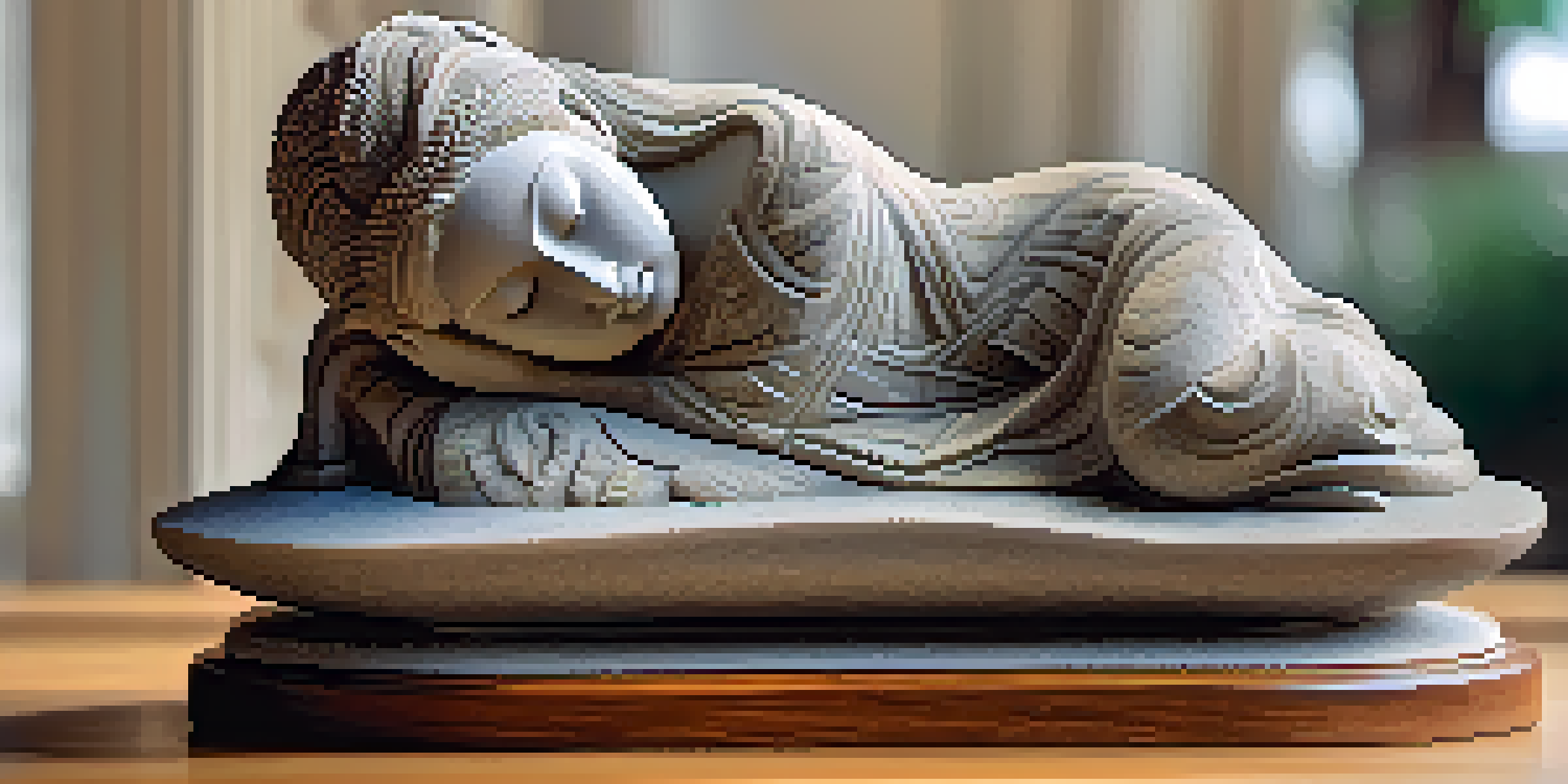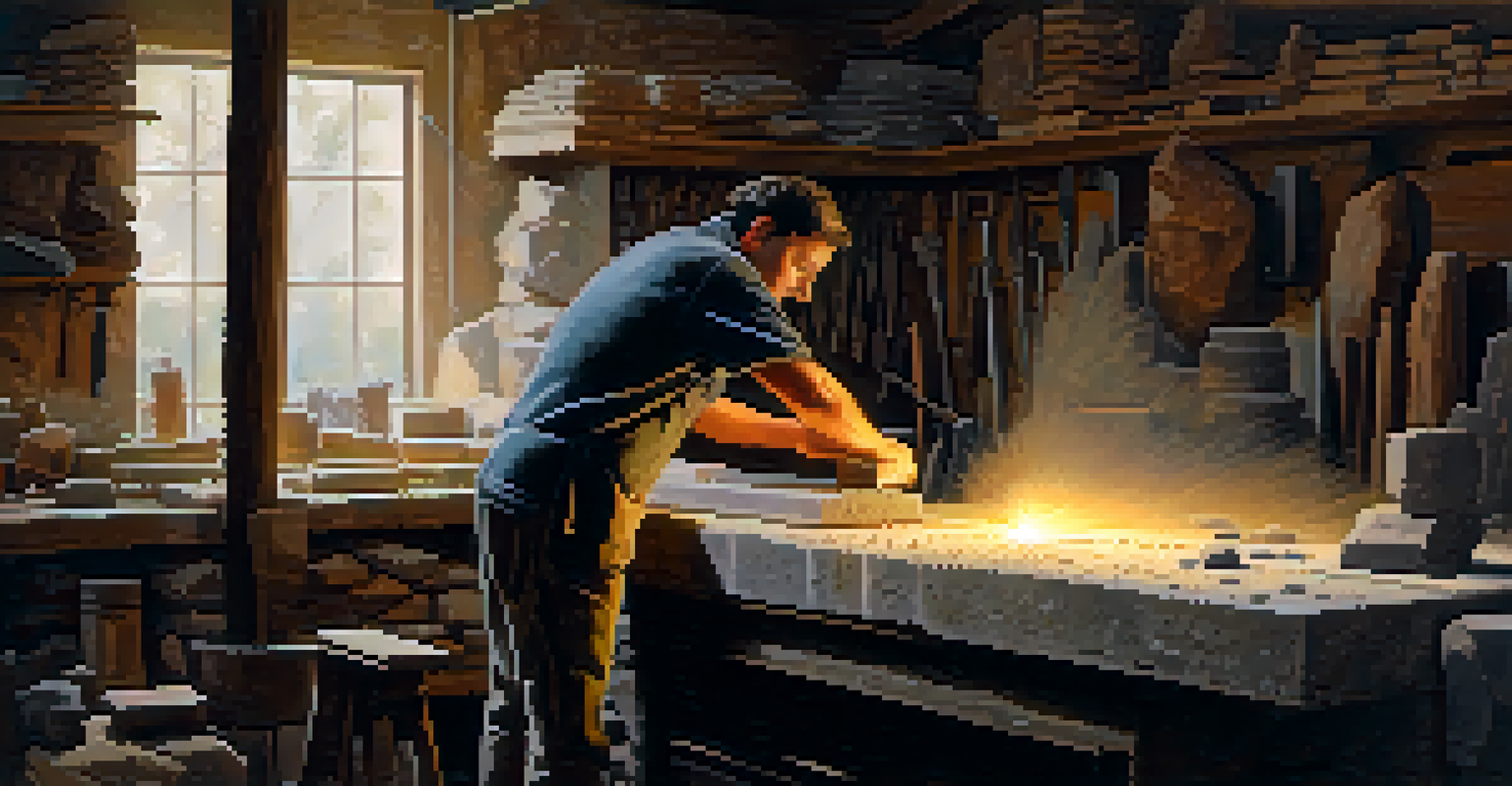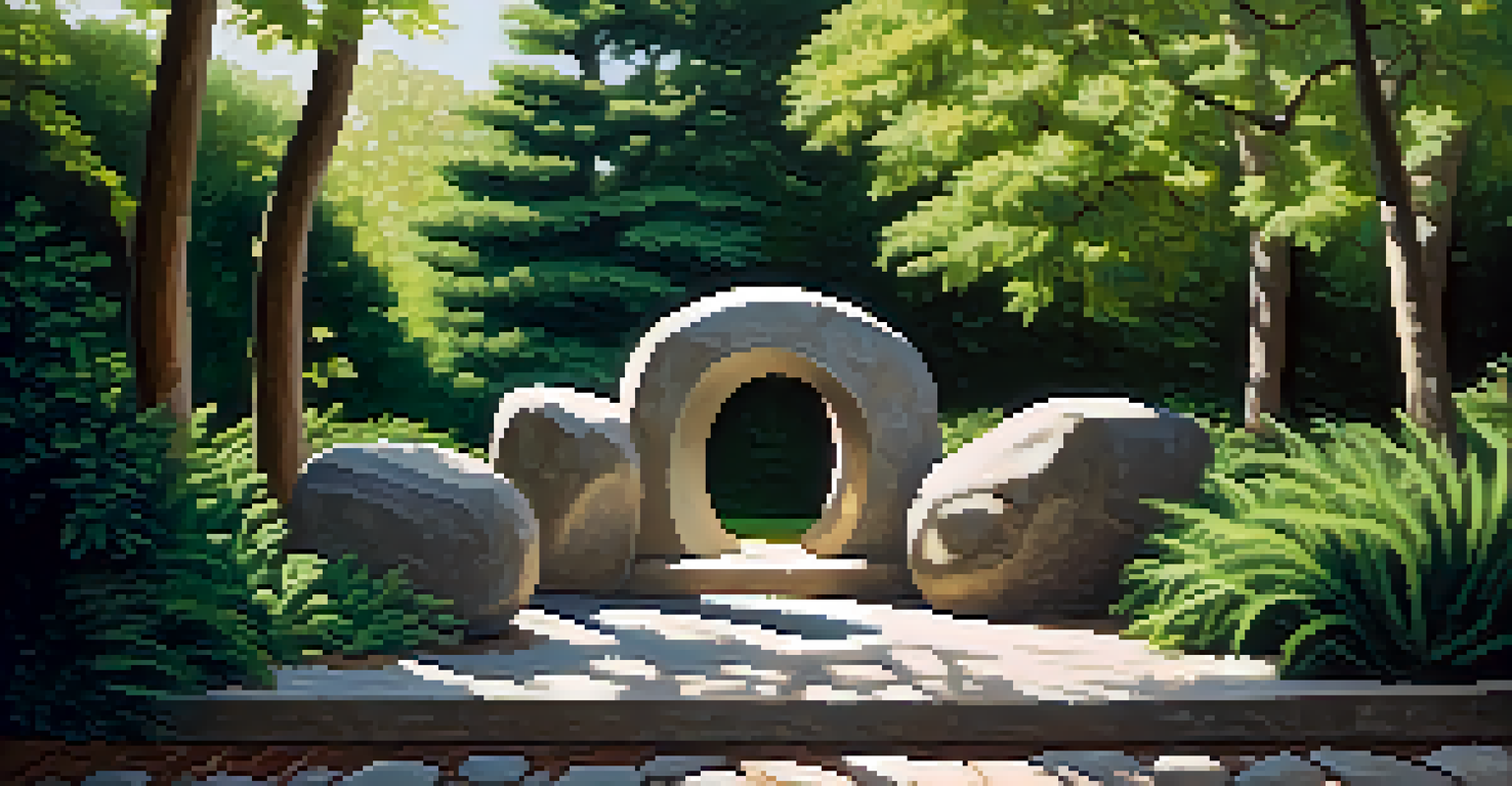Natural Elements: Incorporating Stones in Your Carving Projects

The Timeless Beauty of Stone in Art
Stones have been used in art and architecture for centuries, captivating us with their natural beauty and durability. Their unique textures and colors can add depth to any carving project, creating pieces that resonate with both nature and artistry. Think of ancient sculptures that have stood the test of time; many owe their longevity to the solid foundation provided by stone.
Every block of stone has a statue inside it and it is the task of the sculptor to discover it.
When you incorporate stones into your carving projects, you invite a sense of history and authenticity. Each stone has its own story, from the swirling patterns of marble to the rugged edges of granite. This connection to the earth can transform your work, making it not just a piece of art, but a piece of nature itself.
Moreover, stones can serve as both a medium and an accent. Whether you're carving directly into the stone or using it to complement wood or metal, stones can elevate your work to new creative heights. Imagine a beautifully carved wooden figure resting on a polished stone base, harmonizing the warmth of wood with the coolness of stone.
Choosing the Right Stones for Your Project
Selecting the right type of stone is crucial for achieving your artistic vision. You might opt for softer stones like soapstone or alabaster, which are easier to carve, especially for beginners. These stones allow for intricate details and smooth finishes, making them ideal for smaller, delicate pieces.

On the other hand, if you’re looking for something more robust, consider stones like granite or basalt. These hard stones can be challenging to work with but yield stunning results that showcase their natural patterns and colors. They are excellent choices for outdoor sculptures or pieces intended to withstand the elements.
Embrace Stone's Unique Beauty
Stones offer a timeless appeal in art, adding depth and a connection to nature through their unique textures and colors.
Don’t forget about the aesthetic qualities of the stones you choose. Each stone offers a unique palette that can either enhance or contrast with your carving's design. Take the time to visit local stone suppliers or quarries to see and feel the materials; it can make a world of difference in your artistic approach.
Techniques for Carving Stone Like a Pro
Carving stone requires a different approach compared to softer materials. It's important to familiarize yourself with the appropriate tools, such as chisels, hammers, and grinders. Each tool has a specific function, helping you achieve the desired texture and detail in your work.
Art is the most beautiful of all lies.
Start with rough shaping using heavier tools to remove large sections of stone. Once you have the basic form, switch to finer tools for detailing. This gradual approach not only helps in managing the stone but also allows you to refine your design progressively, ensuring you stay true to your original vision.
Practice is key when it comes to stone carving. Don’t be discouraged by initial challenges; even experienced artists encounter difficulties. Each chip and groove you make brings you closer to mastering the art, so embrace the process and enjoy the journey of transforming a raw stone into a masterpiece.
Integrating Stone with Other Materials
One of the most exciting aspects of stone carving is the opportunity to blend stones with other materials. Combining stone with wood, metal, or glass can create striking contrasts that enhance the overall visual appeal of your project. For example, a wooden sculpture adorned with stone accents can create a beautiful juxtaposition of organic and inorganic materials.
Think about how different textures interact with each other. A smooth stone surface can offer a pleasing contrast to the roughness of carved wood. This interplay can lead to captivating pieces that draw the viewer's eye and invite them to explore the details of your work.
Choose the Right Stone Wisely
Selecting the appropriate type of stone is crucial for achieving your artistic vision and ensuring a successful carving experience.
When integrating materials, consider the weight and balance of your piece. Ensure that the combination of materials is not only visually appealing but also structurally sound. This careful consideration will help your artwork stand the test of time, both in terms of durability and aesthetic harmony.
Finishing Touches: Polishing and Sealing Stone
Once you've completed your carving, the finishing touches can make all the difference. Polishing your stone piece enhances its natural beauty and brings out its unique colors. Various polishing compounds and techniques can be used to achieve a smooth, lustrous finish that feels as good as it looks.
Sealing your stone can also protect it from dust, moisture, and stains. This step is especially important for outdoor pieces that will be exposed to the elements. Choose a sealant that is appropriate for the type of stone you’re working with, as different stones react uniquely to various products.
Don't overlook the importance of maintaining your stone sculptures. Regular cleaning and occasional resealing can prolong the life of your art, ensuring it remains vibrant and beautiful for years to come. This care not only protects your investment but also honors the effort and creativity you've poured into your work.
Showcasing Your Stone Carvings
Once your masterpiece is complete, it's time to share it with the world! Consider the best way to showcase your stone carvings, whether through galleries, exhibitions, or online platforms. Each avenue offers a unique opportunity to connect with an audience and gain valuable feedback.
Social media can be a powerful tool for artists today. Sharing behind-the-scenes processes, finished pieces, and even your workspace can engage your followers and attract potential buyers. Use hashtags related to stone carving and art to reach a wider audience, helping your work gain visibility.
Showcase Your Art Creatively
Sharing your completed stone carvings through various platforms and events can enhance visibility and foster connections with art enthusiasts.
Don’t forget about local art fairs and community events. These can be fantastic opportunities to meet other artists and art enthusiasts. Plus, showcasing your work in person allows people to appreciate the texture and intricacies of your carvings up close, creating a personal connection that can lead to future opportunities.
The Emotional Connection of Carving with Stone
Carving stone is more than just a craft; it's an emotional journey that connects you to the earth and your creative spirit. Each stroke of the chisel allows for self-expression, letting you channel your thoughts and feelings into the stone. This process can be incredibly therapeutic, providing a sense of accomplishment as you witness your vision take shape.
Stone carving can also serve as a form of meditation. The rhythmic motions and focus required can help clear your mind, allowing you to escape the hustle and bustle of daily life. Many artists find that the act of carving becomes a sanctuary where they can explore their creativity without distractions.

Ultimately, the emotional connection you establish with your materials and your work is what makes each piece truly unique. By sharing your story and artistic journey with others, you invite them to appreciate not just the final product, but the passion and dedication that went into creating it.